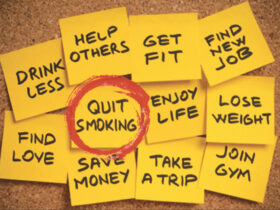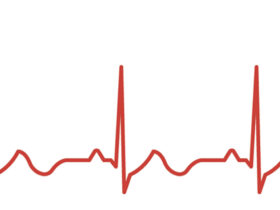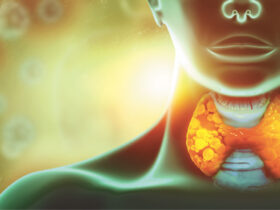By Dr. Amanda Rizner and Maria Guzman, RDH
 Maintaining proper dental hygiene is essential for not only oral health, but overall vitality and well-being. A healthy mouth not only helps in preventing cavities, gum disease, and bad breath, but is also linked to a lower risk of more severe health issues such as heart disease and diabetes. Here are the top seven tips for improving dental hygiene and helping you achieve a bright smile with optimal oral health.
Maintaining proper dental hygiene is essential for not only oral health, but overall vitality and well-being. A healthy mouth not only helps in preventing cavities, gum disease, and bad breath, but is also linked to a lower risk of more severe health issues such as heart disease and diabetes. Here are the top seven tips for improving dental hygiene and helping you achieve a bright smile with optimal oral health.
Tip #1 – Use an Electric Toothbrush
An electric toothbrush can be more effective at removing plaque than a manual toothbrush, especially if you have difficulty maintaining proper brushing technique. Electric toothbrushes use oscillating or vibrating motions to clean teeth more thoroughly and often come with built-in timers to ensure you brush for the recommended two minutes. They are also easier to use for individuals with limited dexterity such as children, the elderly, or those with certain disabilities. Most of these devices also come with a pressure indicator in order to prevent aggressive brushing and gingival recession. Brushing is recommended twice daily and is best to be done thirty minutes after any meal, especially a meal high in acid.
Tip #2- Replace Your Toothbrush Regularly
Over time, the bristles of your toothbrush wear out and become less effective at removing plaque. It’s important to replace your toothbrush (or toothbrush head, if using an electric toothbrush) every three to four months, or sooner if the bristles are frayed. A worn-out toothbrush not only cleans less effectively but can also harbor bacteria. To maintain optimal brushing efficiency, switch to a new toothbrush regularly, especially after recovering from a cold or infection. It is also essential to use a soft toothbrush head. Hard bristles can traumatize the gingival tissue and lead to unhealthy recession and tooth sensitivity.
Tip #3 – Floss at Least Once Daily
While brushing cleans the surfaces of your teeth, it often misses the tight spaces between them where food particles and plaque can accumulate. Flossing once a day helps remove debris from between teeth and prevents plaque buildup in areas that brushing can’t reach. Flossing also helps prevent gum disease, which starts between the teeth and can lead to tooth loss if untreated. To floss effectively, gently guide the floss between your teeth and curve it around the base of each tooth, making sure to go beneath the gum line. Floss picks are a popular trend that can work on the go, however, they should not replace traditional floss as this gets below the gum tissue more effectively. If you tend to have a high caries risk, it may be beneficial to floss at least twice daily to prevent further decay.
Tip #4 – Drink Water After All Meals
Water is crucial for your overall health, and it plays an important role in maintaining good dental hygiene. Drinking water, especially after meals, helps wash away food particles and neutralizes acids produced by bacteria in your mouth. It also keeps your mouth moist which promotes the production of saliva. Saliva is essential because it helps clean your mouth by dissolving food particles and preventing bacteria from adhering to your teeth. It also is crucial in buffering acidic food and drink. It’s best to drink water immediately following meals as well as after any type of acidic or sugary drink.
Tip #5 – Keep Your Dental Cleanings every 6 Months or Shorter
Even with impeccable home dental care, it’s essential to visit your dentist at least twice a year for professional check-ups and cleanings. During these visits, your dentist can detect early signs of gum disease, cavities, and other dental issues that may not be noticeable at home. Professional cleanings remove calculus, which is hardened plaque that cannot be eliminated through regular brushing and flossing. Regular visits also allow for early treatment of potential problems, saving you from more complex and expensive procedures down the line. Patients who suffer from a dry mouth are at an elevated risk of dental caries, so even with good home care, its essential these patients come in for regular visits to prevent further issues. A hygienist is trained to look for early areas of decay during dental cleanings in order to stop major problems from occurring.
Tip #6 Limit Acidic and Sugary Drinks and Meals
Frequent consumption of sugary and acidic beverages, including sports drinks and fruit juices, can lead to enamel erosion and increase the risk of cavities. Acidic drinks can weaken your enamel while sugar feeds harmful bacteria in your mouth which can accelerate the process of tooth decay. If you do indulge in these beverages, try using a straw to minimize contact with your teeth and drink water afterward to rinse your mouth. It’s best to wait thirty minutes after consumption of these food and drinks before brushing in order to let your saliva neutralize and reduce the risk of abrading the enamel with direct acid and sugar.
Tip #7 – Use a Remineralizing Toothpaste
Most patients who have a high caries risk can benefit from using a remineralizing type of toothpaste which can aim to make the enamel stronger and less prone to decay. The most popular type of remineralizing toothpastes are those which contain fluoride. Fluoride aims to make the enamel less prone to acid erosion and can reverse early signs of decay. Hydroxyapatite is a rising alternative to fluoride and may also help to remineralize teeth by binding to the teeth and filling in small voids or cracks. It is a naturally occurring mineral and the main component of tooth enamel. Some dental offices are now offering hydroxyapatite varnish as an option for patients at their six month recall appointments.
Conclusion
By following these top seven dental hygiene tips, you can greatly reduce your risk of developing cavities, gum disease, and other dental issues. Developing good oral care habits and making healthy lifestyle choices are key components of a long lasting smile.
(941) 529-0055
www.dentistryonfruitville.com







